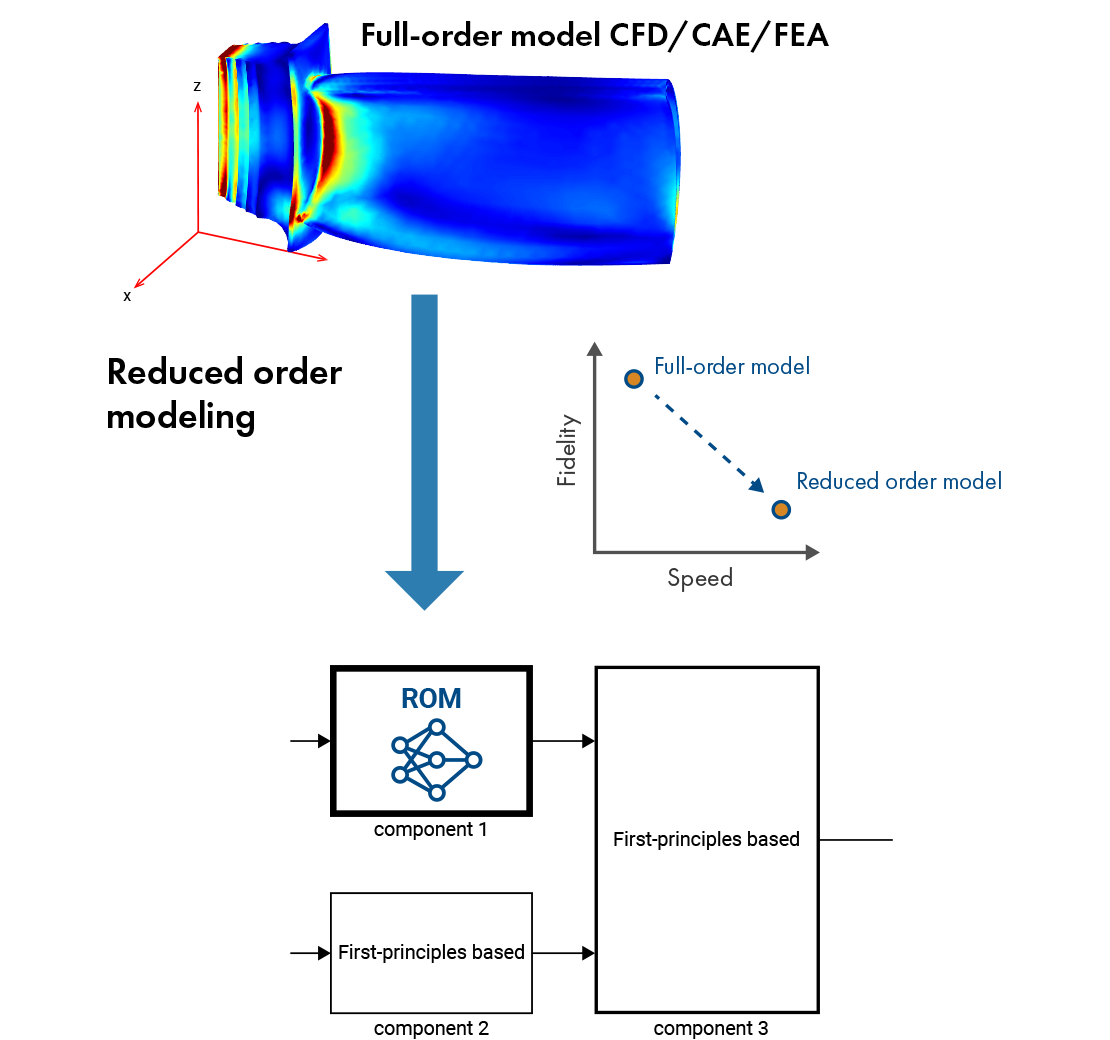Reduced Order Models for Speeding up Simulation Using AI
Overview
High-fidelity models, such as those based on FEA (finite element analysis), CFD (computational fluid dynamics), and CAE (computer-aided engineering) models can take hours or even days to simulate and are not suitable for all stages of development. For example, an FEA model that is useful for detailed component design will be too slow to include in system-level simulations for verifying your control system or to perform system analyses that require many simulation runs. A high-fidelity model will be too slow to run in real time in your embedded system. This is where reduced-order modeling (ROM) comes to the rescue. ROM is a set of computational techniques that helps you reuse your high-fidelity models to create faster-running, lower-fidelity approximations.
Attend this webinar to learn how to create AI-based reduced order models to replace the complex high-fidelity model. Using the Simulink add-on for Reduced Order Modeling, see how you can perform a thorough design of experiments and use the resulting input-output data to train AI models using pre-configured templates of LSTMs, neural ODE, and nonlinear ARX. Learn how to integrate these AI models into your Simulink simulations for control design, hardware-in-the-Loop (HIL) testing, or deployment to embedded systems. The session is pre-recorded with a live Q&A session at the end, held by Nils Hornik and Rainer Mümmler.
Highlights
- Creating AI-based reduced order models using the Reduced Order Modeler App
- Integrating trained AI models into Simulink for system-level simulation
- Leveraging ROM for embedded real-time model predictive control (MPC)
- Generating optimized C code and performing HIL tests
About the Presenters
Mahaveer Satra
Senior Application Engineer | MathWorks
Mahaveer serves as a Senior Application Engineer within the industrial automation, medical and semiconductor manufacturing industries. He has been with MathWorks since 2020. His focus at MathWorks includes physics-based modeling, controls systems, robotics, system identification and predictive maintenance and integration of MATLAB software components in other programming languages and environments. Mahaveer holds a M.Sc. degree in Mechanical Engineering from the Ohio State University with an emphasis on automotive systems, controls and mobility.
Nils Hornik
Application Engineer | MathWorks
Nils is an Applications Engineer at MathWorks in Munich. Here he works closely with customers in the fields of energy generation, transport and storage. The main focus of his work is consulting customers in the area of physical systems modeling.
Before joining MathWorks, he was a software engineer responsible for the model-based development of the PLC-based Energy Management System (EMS) and its commissioning for microgrid projects at DHYBRID Power Systems GmbH.
Rainer Mümmler
Principal Application Engineer | MathWorks
Rainer is a Principal Application Engineer at MathWorks, specializing in Data Analytics, Artificial Intelligence, Predictive Maintenance, Hardware Connectivity, and IoT solutions. Prior to his tenure at MathWorks, he gained valuable experience as a wind tunnel test engineer and served as a freelance consultant for multiple aerospace companies.
